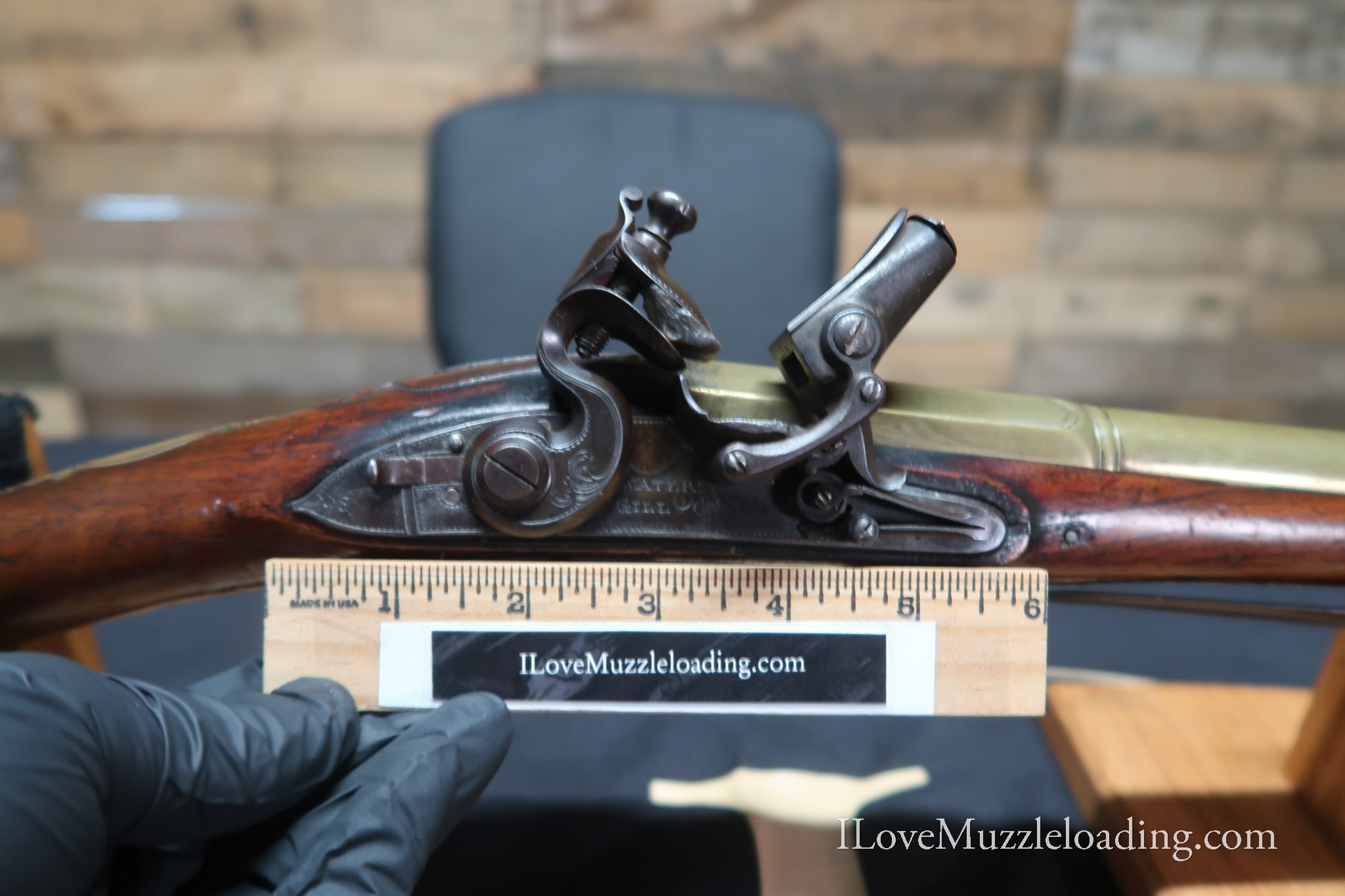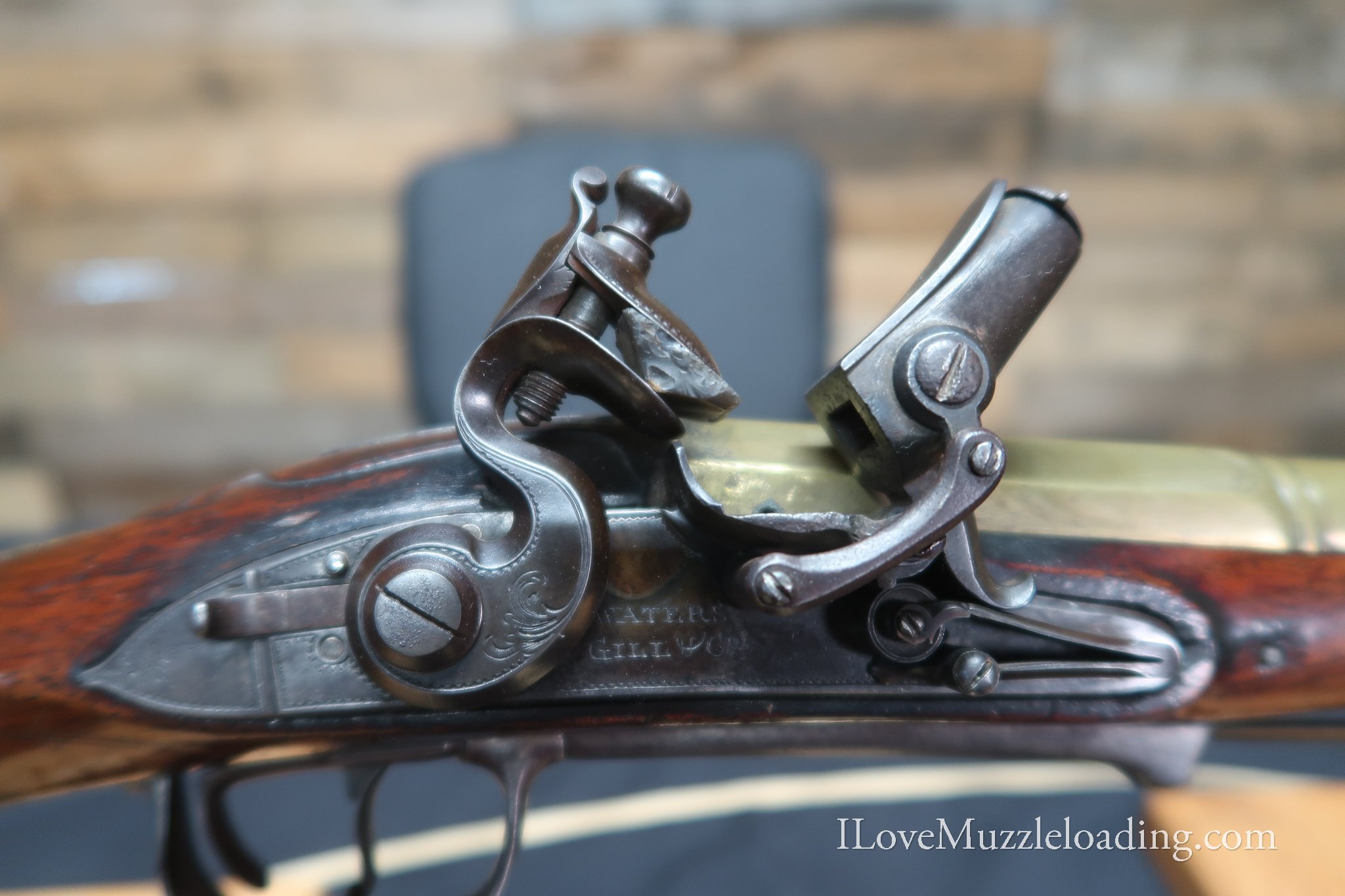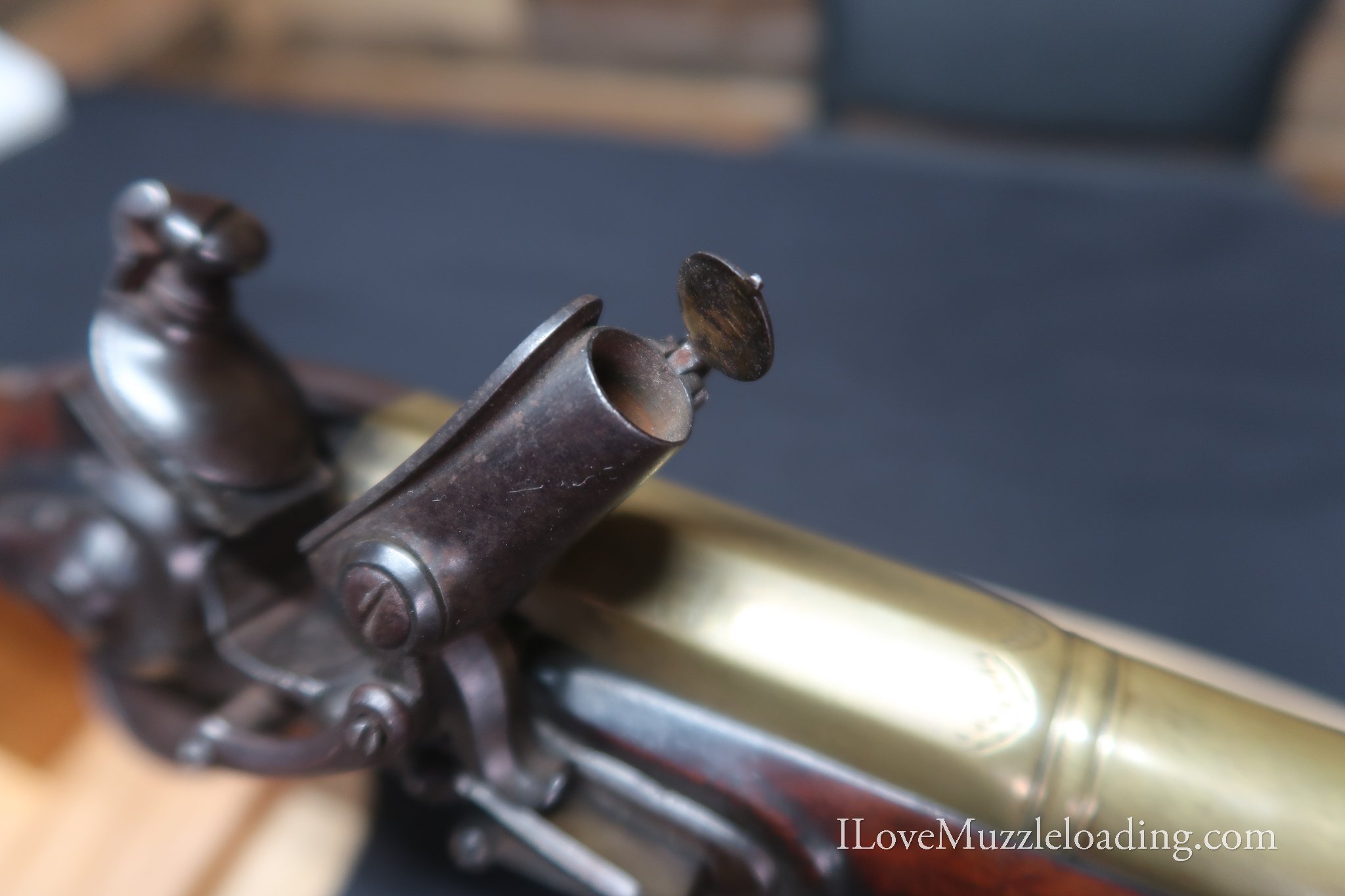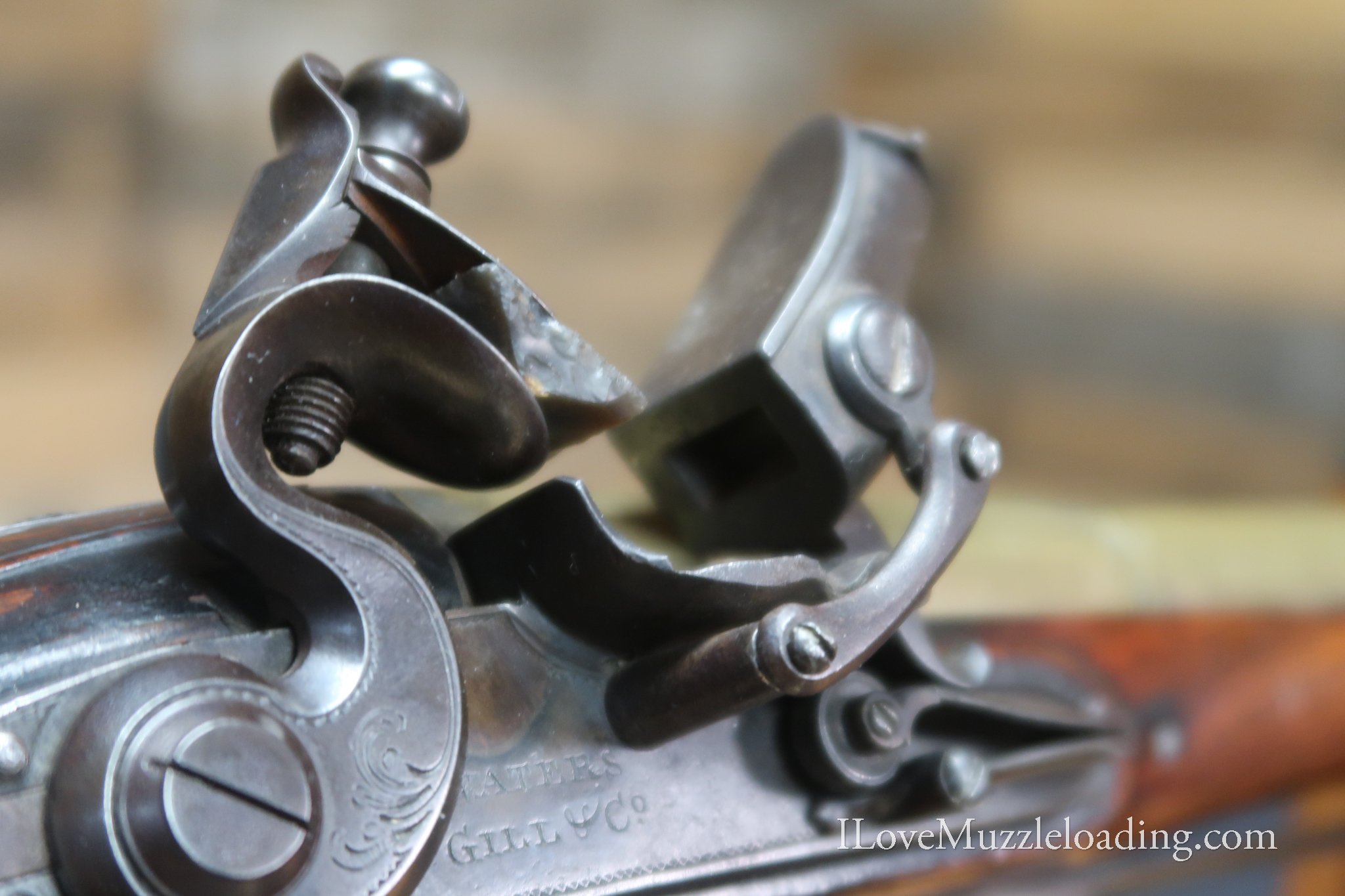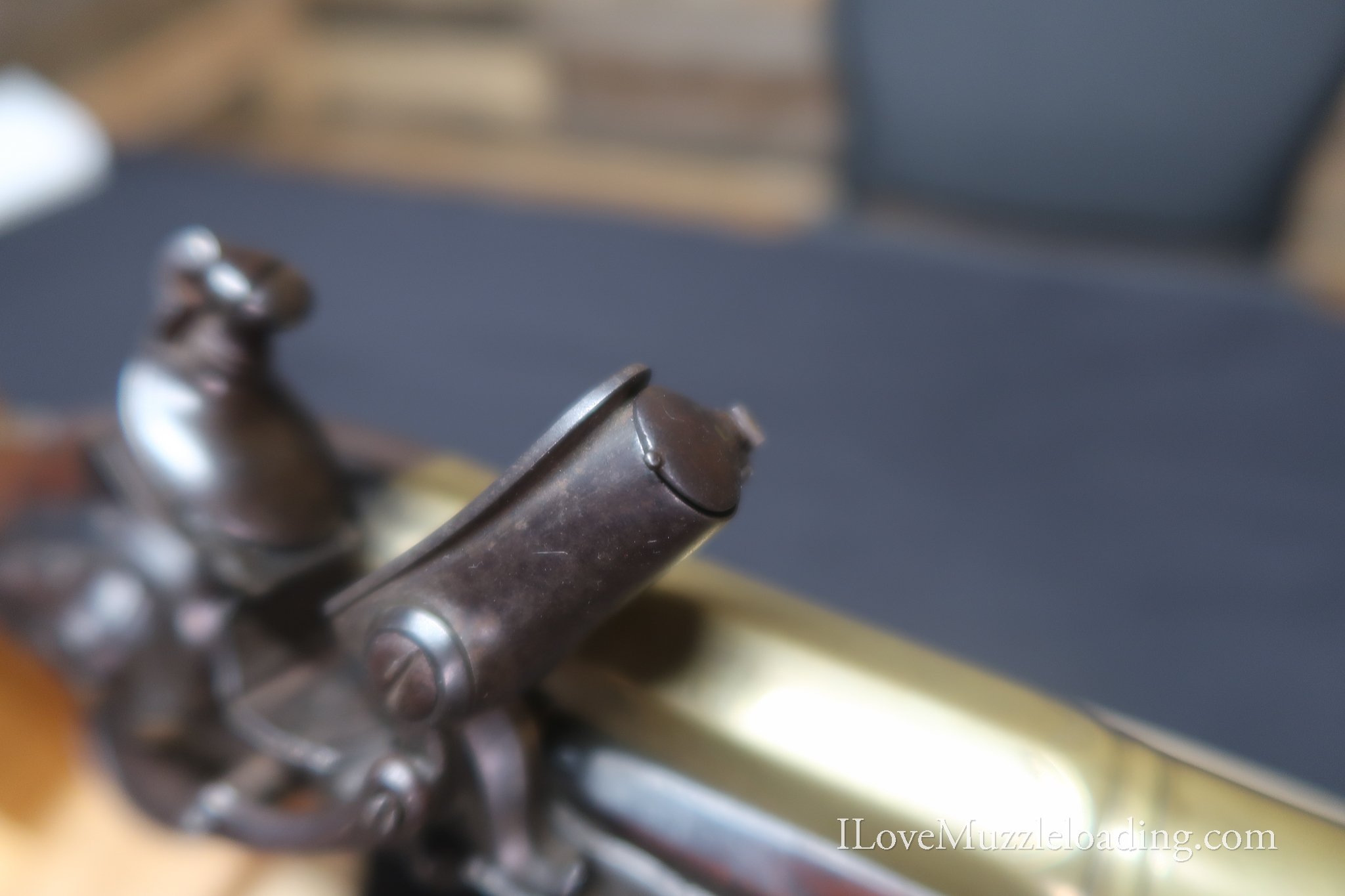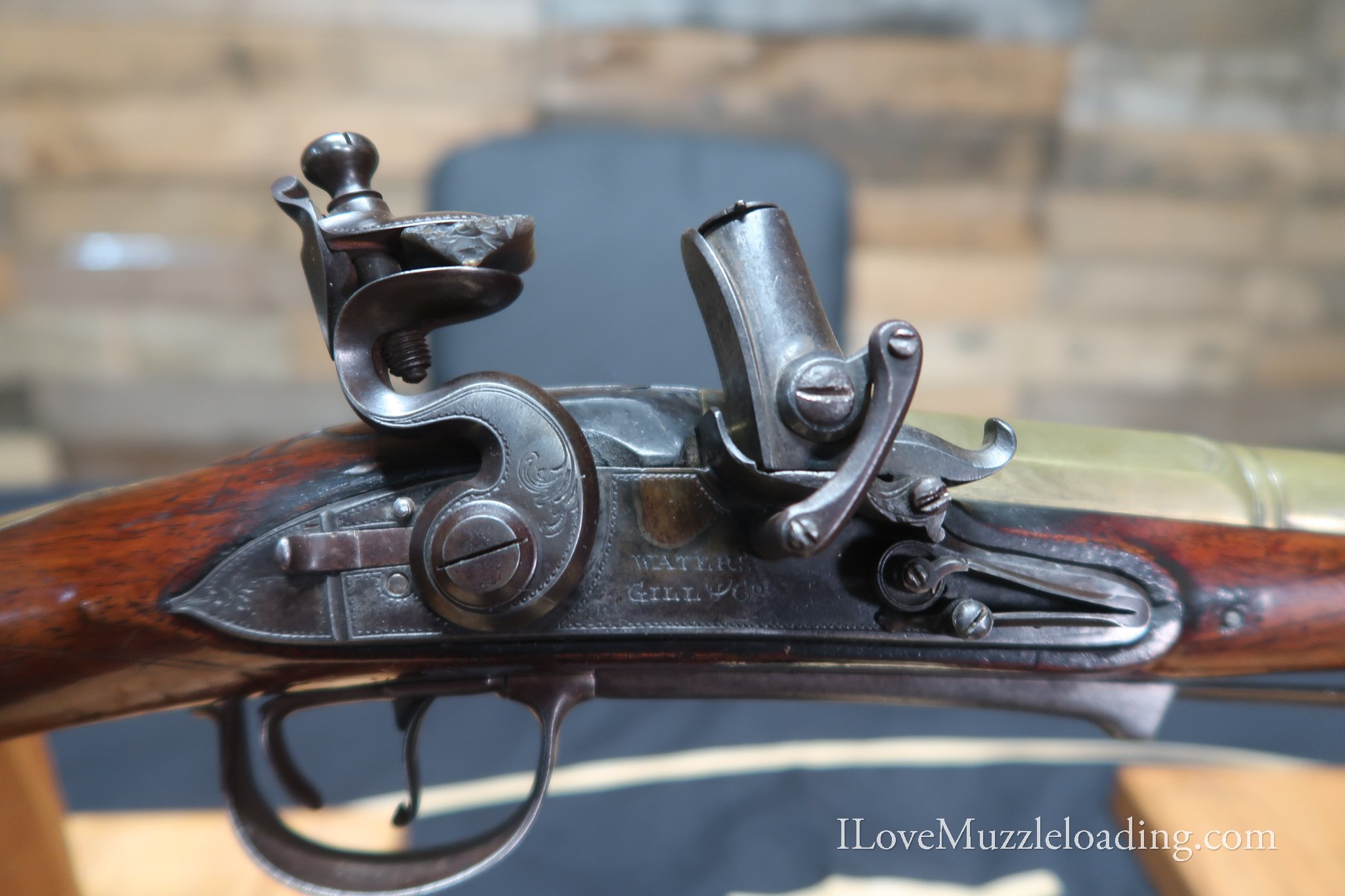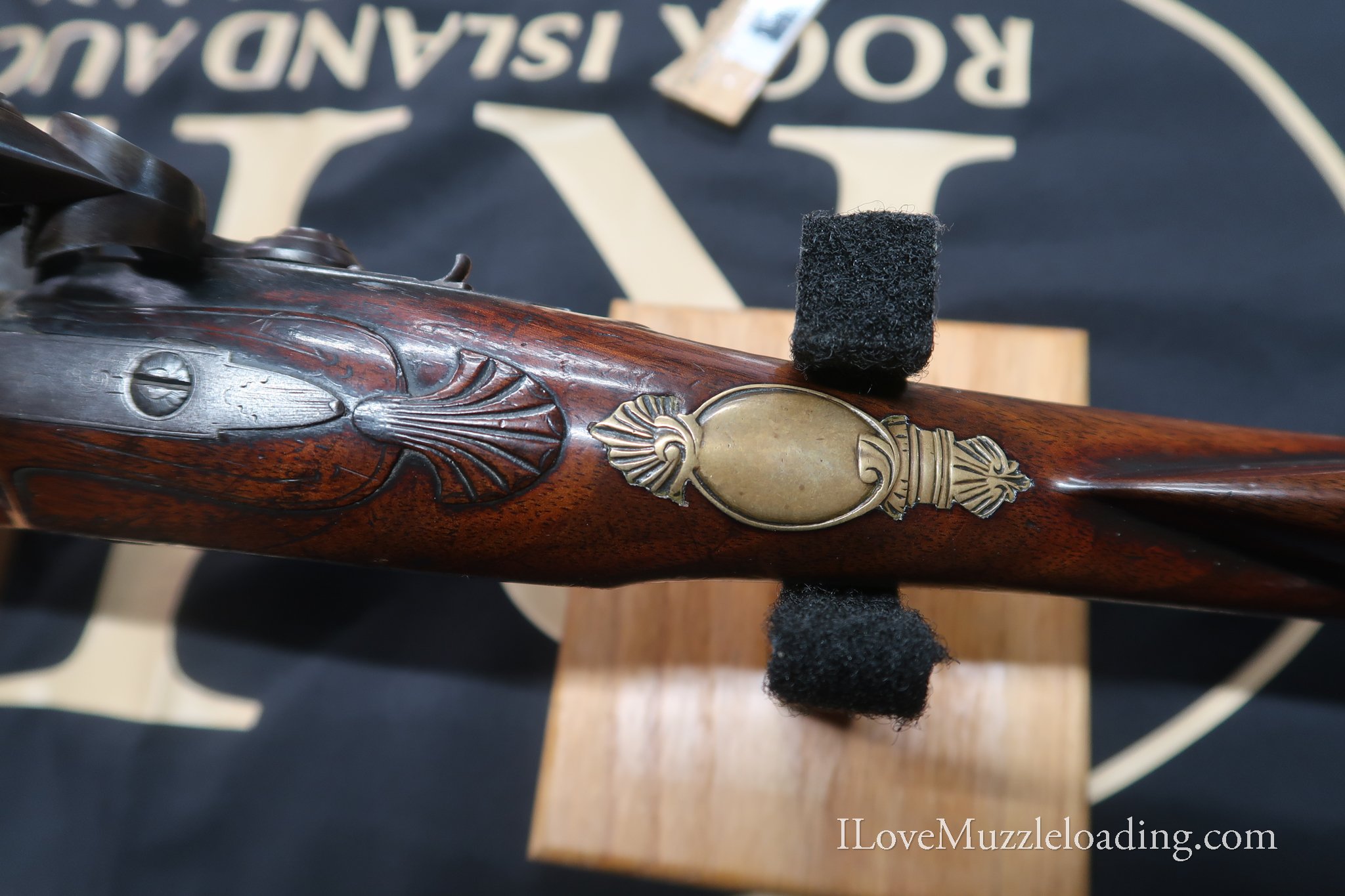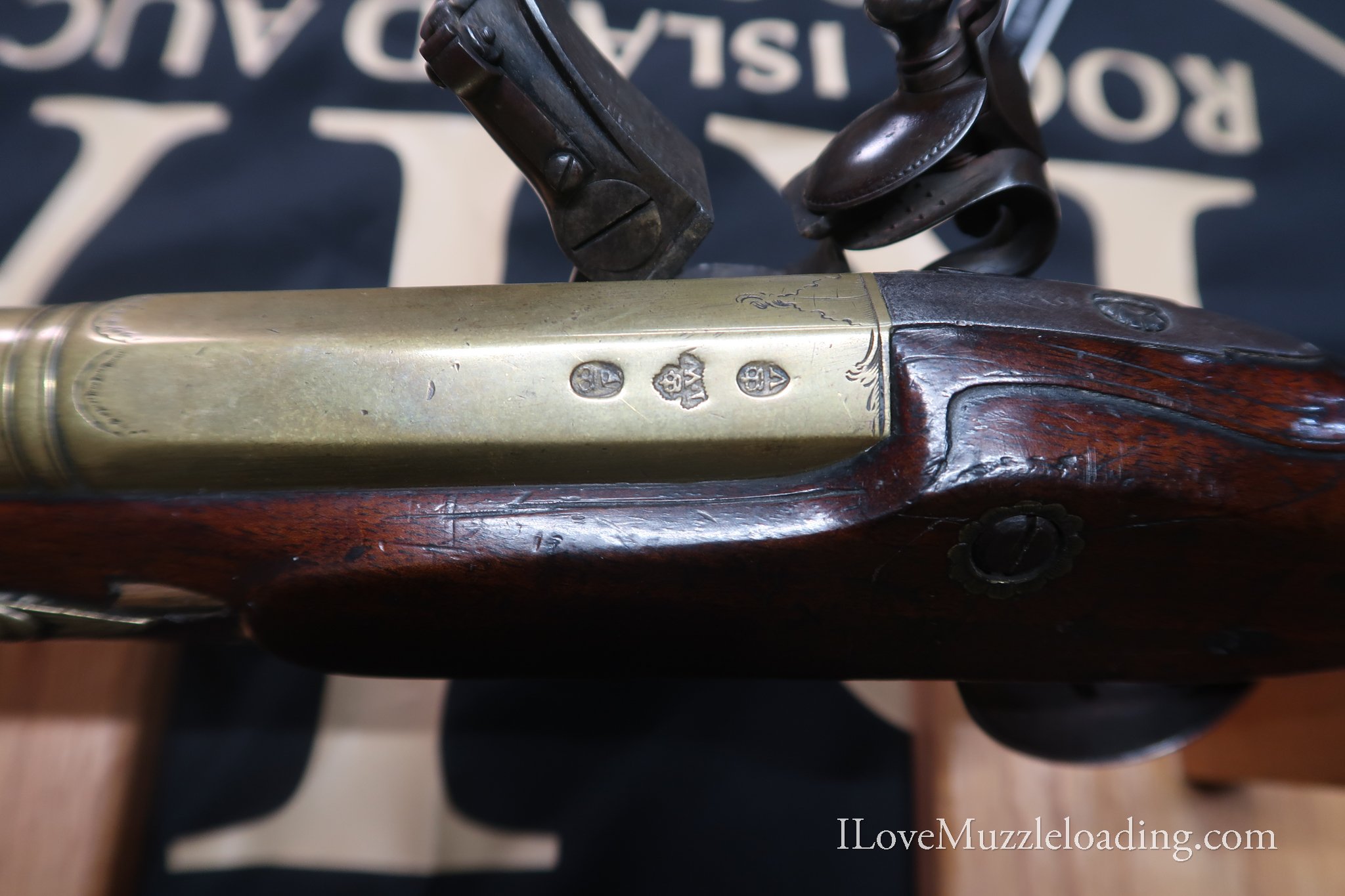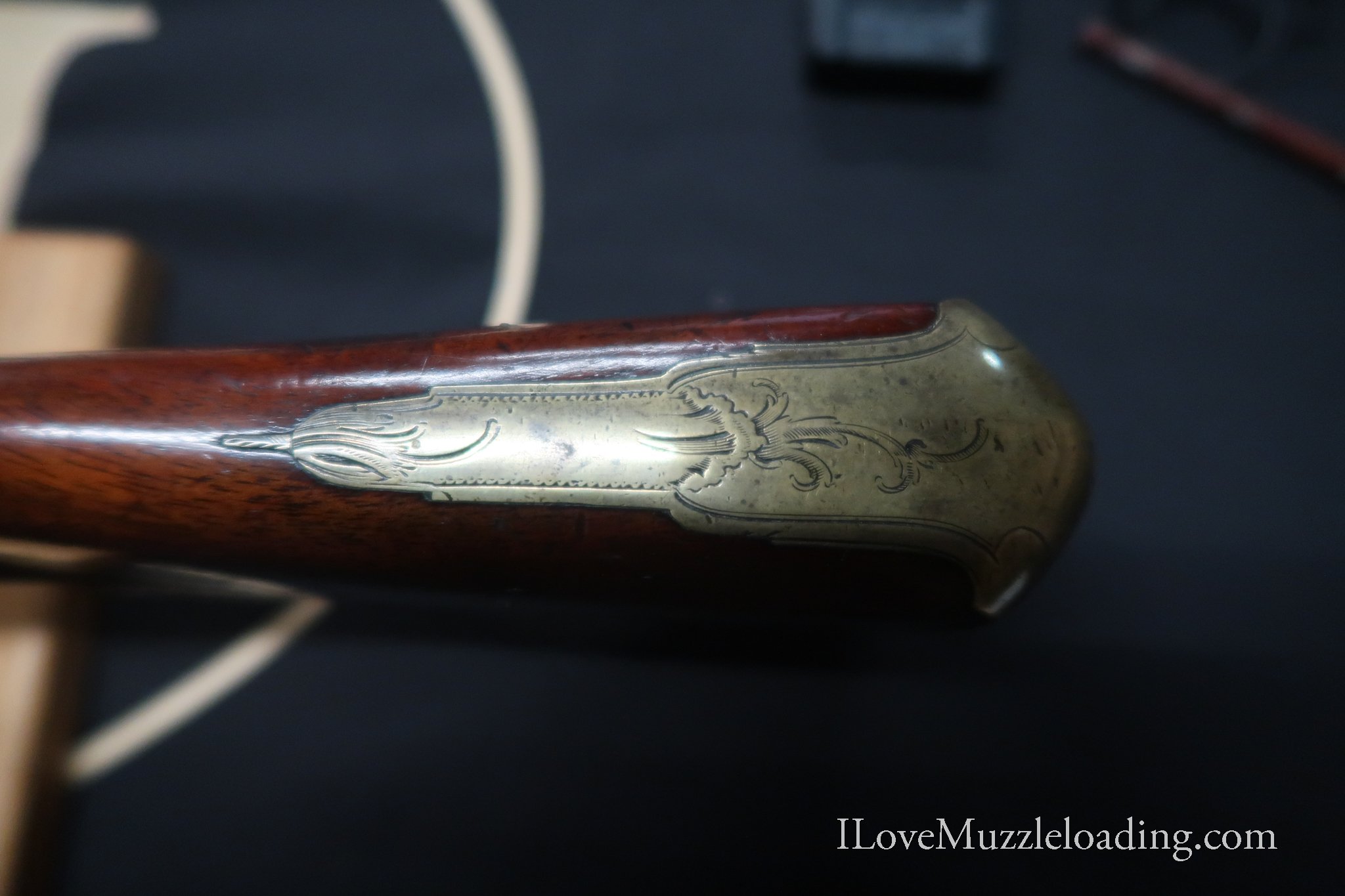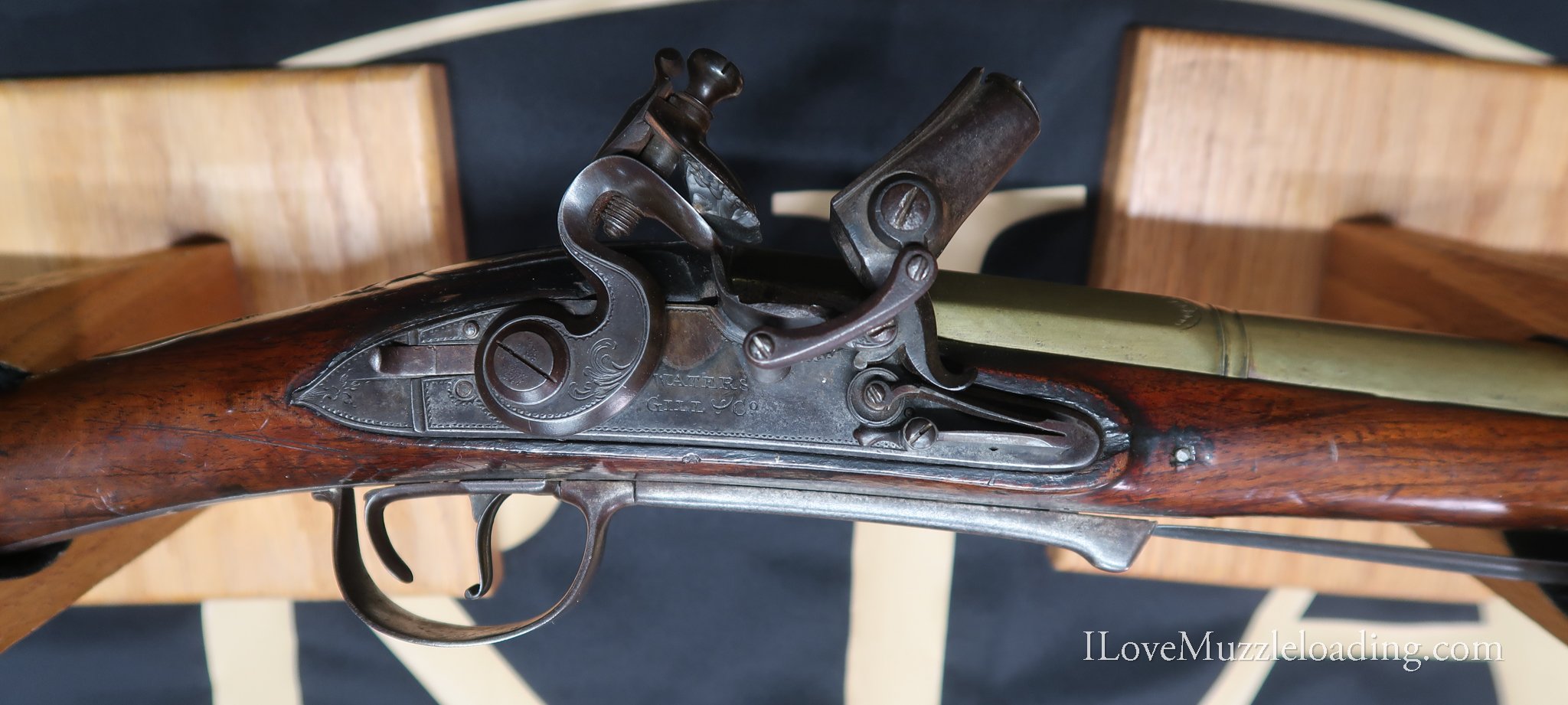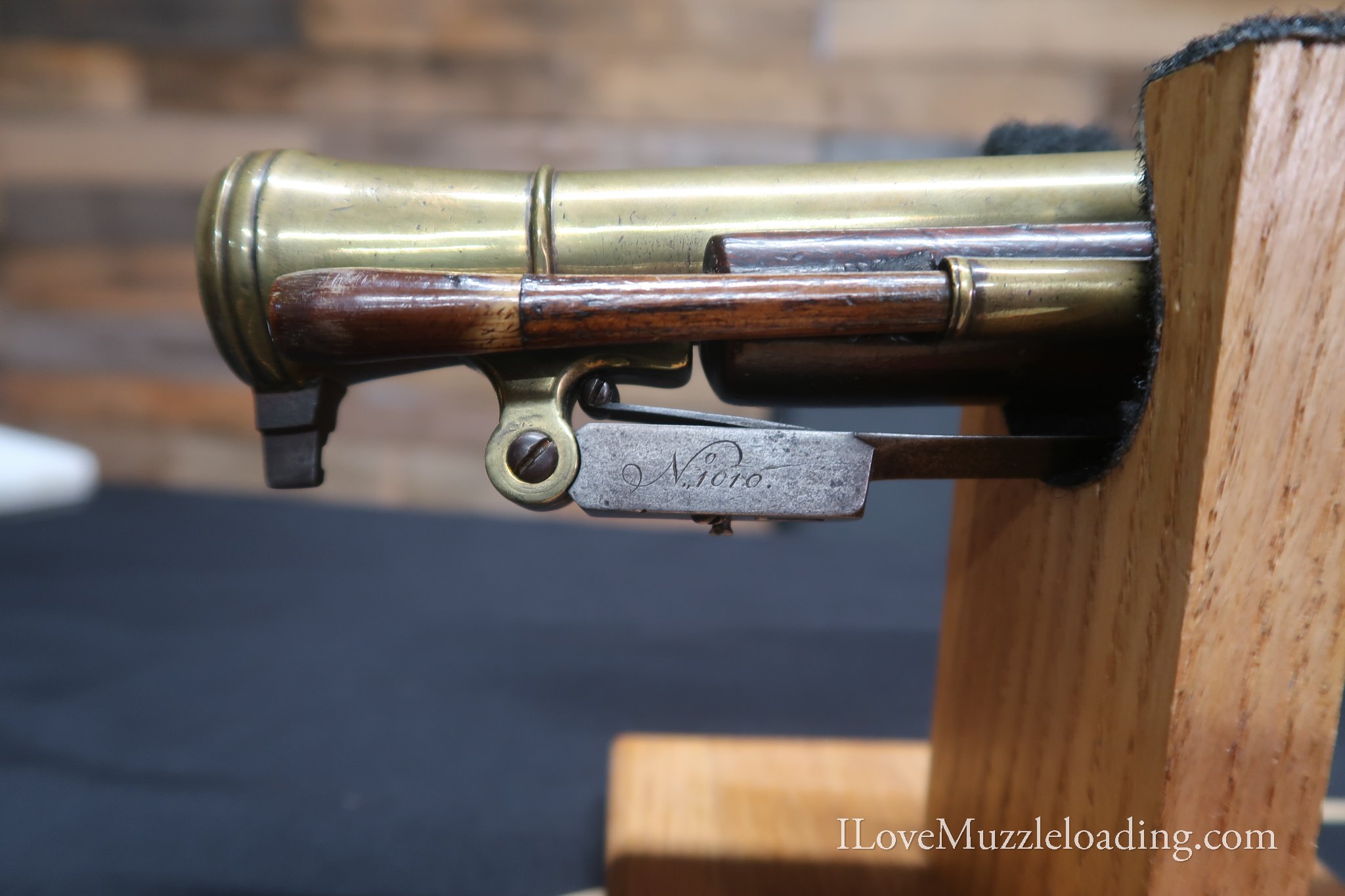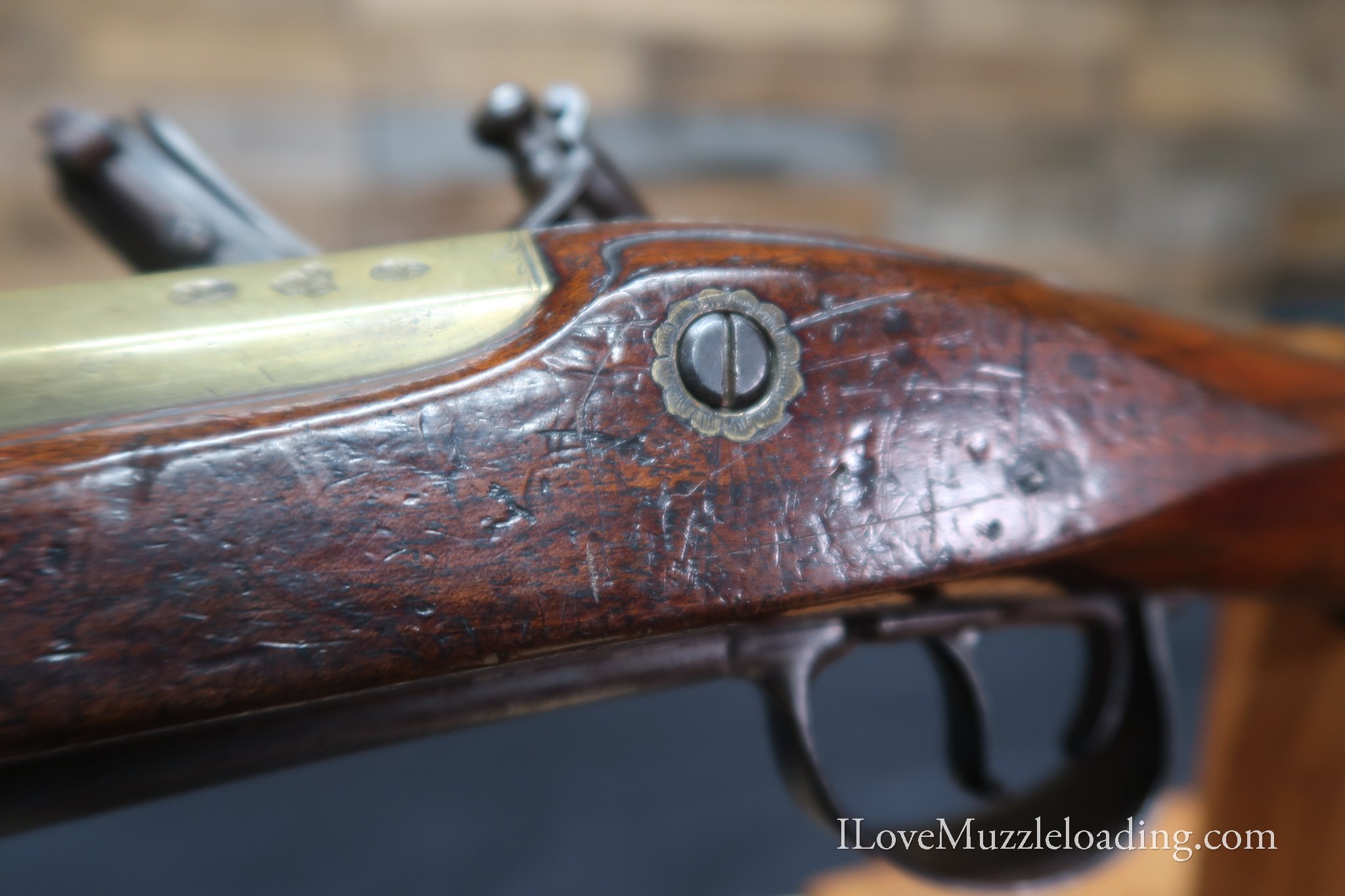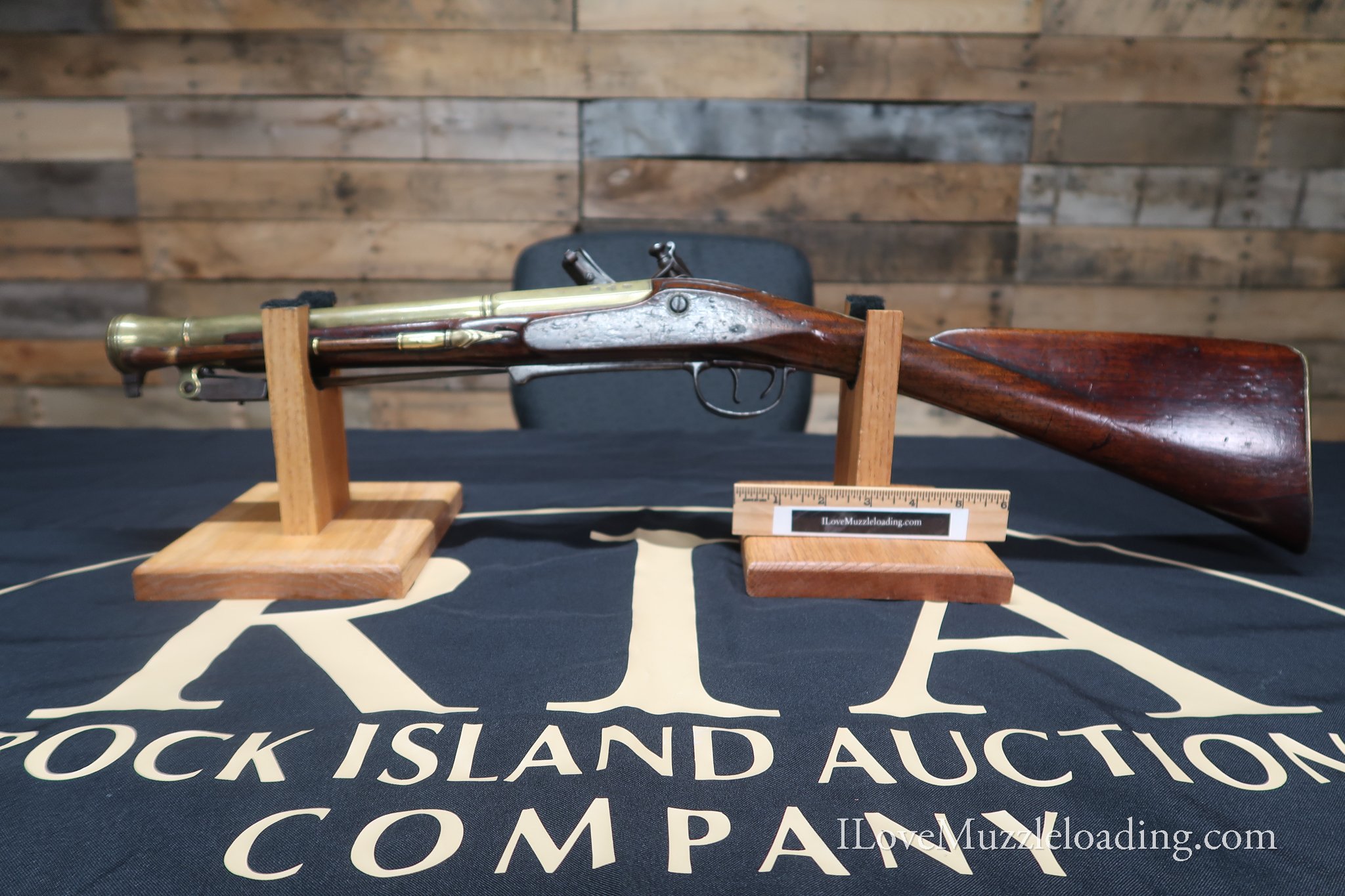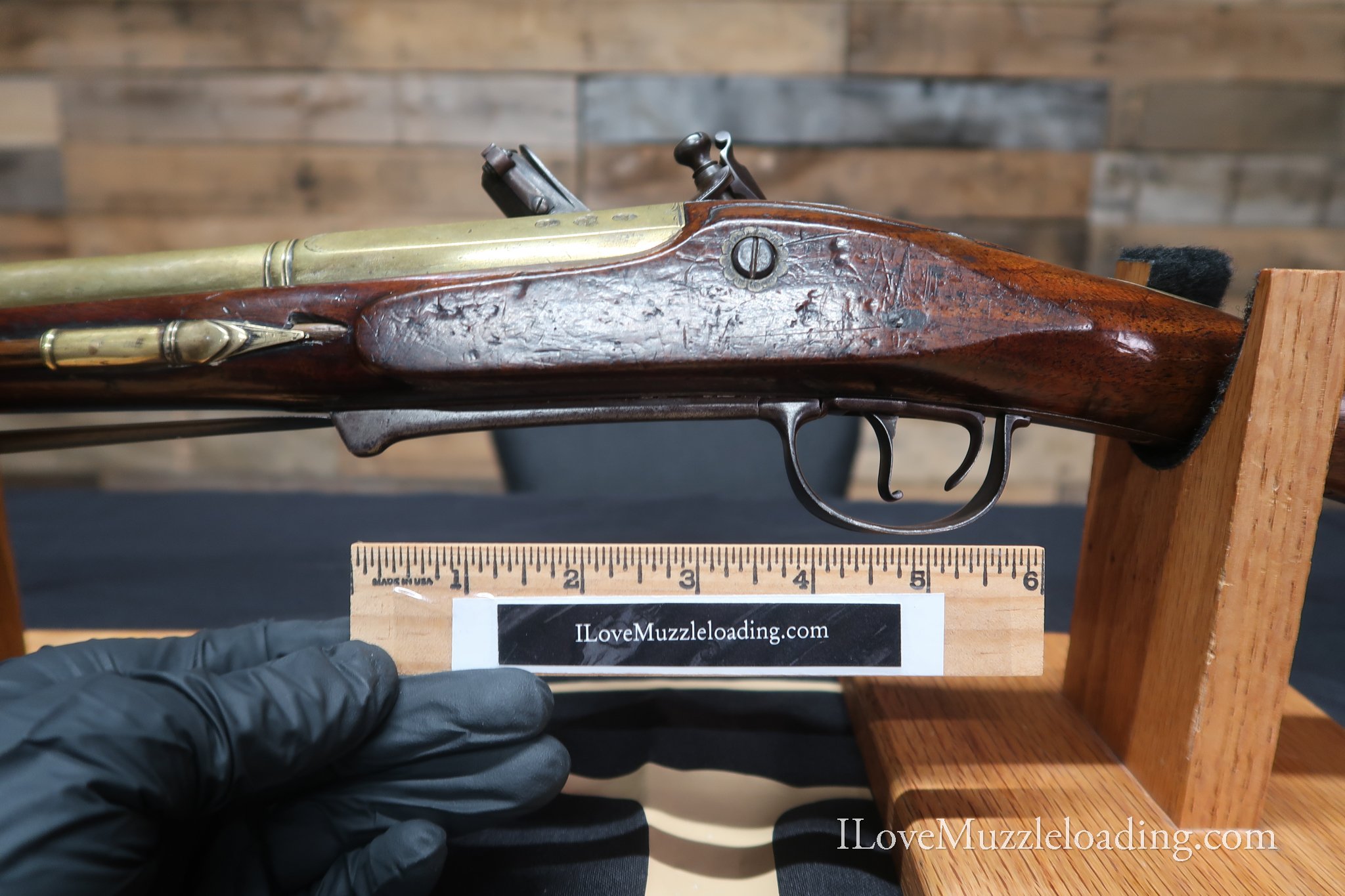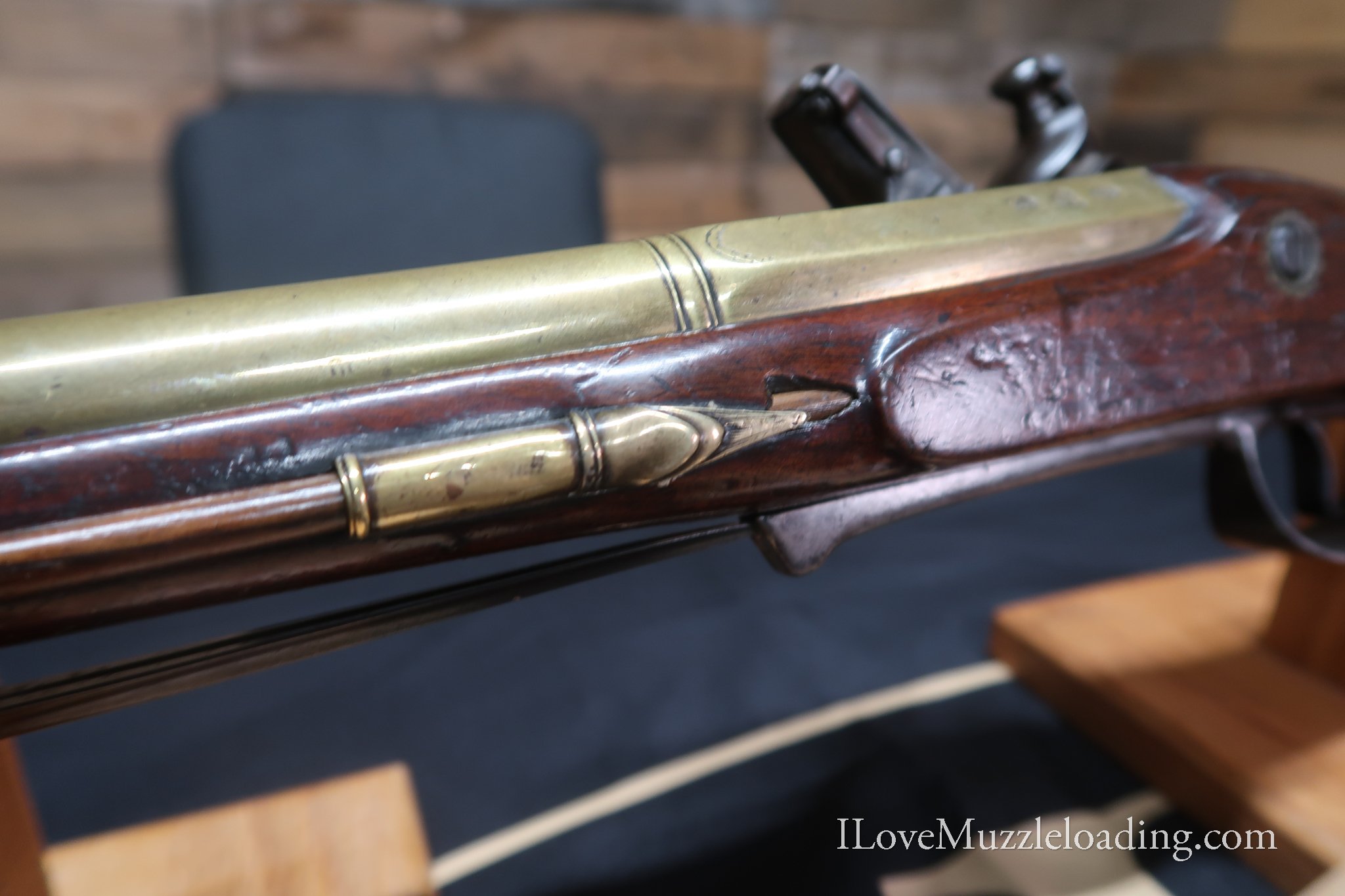Automatic Flintlock Priming in an 18th Century Blunderbuss
Today we’re taking a look at this Waters, Gill & Co. Flintlock Brass Barrel Blunderbuss with Underslung Bayonet and Self-Priming Pan.
This is a great piece for a few reasons in my opinion. First off, it’s a fine example of an English Blunderbuss for the period, the finish is still nice and the wood features minor dings and scratches indicative of some use over time. Second, the underslung bayonet is wonderfully executed. Down to how the bayonet launches with the pull of the ‘rear trigger’ and the catch itself, the entire unit is beautifully done. Those things aside, I wanted to feature this blunderbuss because of it’s unique lock, solidifying it as a prime example of innovation in firearms coming incrementally, and not all at once with total changes in ignition type.
John Waters was granted British patent No. 1284 in 1781 for a sprung bayonet mechanism on pistols and is credited with inventing the "snap bayonet" found on many blunderbusses. Thomas Gill was an English cutler. The barrel has Birmingham private proofs flanking John Waters's "crown/IW" maker's mark on the upper left at the breech, an underslung bayonet that is secured by a mechanism built into the trigger guard and released via a rear trigger, and some light engraving. The bayonet is marked "No 1010." on the left side. The lock is marked "WATERS/GILL & Co." and is equipped with an automatic priming mechanism in the frizzen with a rotating bottom cover linked to an arm on the lock, sliding half-cock safety, stepped tail, and light engraving. The brass furniture has scroll, floral, and shell engraving.
